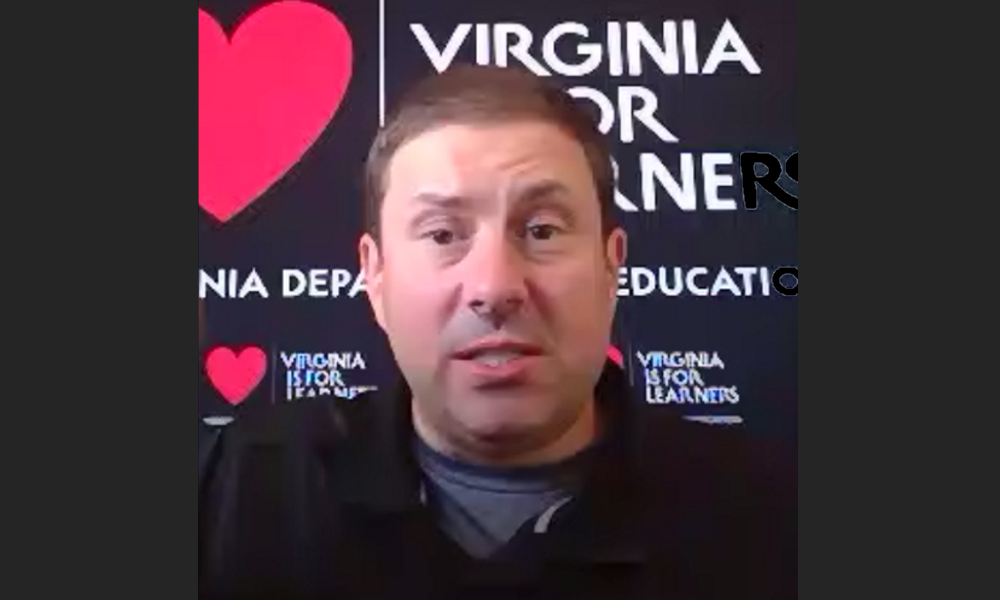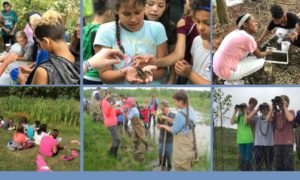
Screenshot
James Lane, Virginia superintendent of public instruction, at an online town hall for after-school providers on Tuesday.
The leader of Virginia public schools reached out to after-school providers in his state to say they are critically needed in the pandemic but may have to alter the way they operate.
“Many of you will be called as a partner to help fill the child care void when many school systems choose to go virtual,” said James Lane, Virginia superintendent of public instruction, at an online town hall for after-school providers on Tuesday. “It may change the way you approach your business model.”
The town hall was sponsored by VPOST, the Virginia Partnership for Out-of-School Time.
Lane said he knew that some providers were concerned about the survival of their organizations.
“Our local school divisions have got to include you in the planning … Parents are going to look to you,” he told the group. “You should be forming a local task force with your superintendent.”
Virginia, like many states across the South and Southwest, is experiencing an increase in COVID-19 cases. Virginia schools are rapidly making plans for the fall, and far more will be operating virtually than was foreseen even two weeks ago, he said. But he expects districts in Virginia to have a clear plan within the next two weeks, knowing whether they will be offering school in person, having remote classes or using a hybrid model.
Different possibilities
Lane described various scenarios in his state:
- In-person school five days a week with physical distancing, face masks worn by staff and students, in-classroom lunches, some virtual learning options and bus service possibly limited to students who get free- and reduced-price lunch.
- A hybrid model in which groups of students alternate days or weeks in the school building, then have online classes on the days or weeks they are not at school. Students will physically distance but may not wear masks at school. The school year may start later to give schools time to prepare.
- Virtual schooling will be likely in urban and suburban districts. A few groups of students such as English language learners, kindergarteners through second-graders, or special education students may be in school buildings, however.
Even in communities with in-person school, bus schedules will be staggered to preserve physical distancing, Lane said. As a result, before and after-school programs may be needed at different hours.
Virtual classes will have more hands-on and project-based learning than last year, he said.
“This is going to be different than the virtual learning we saw in the spring,” which was about continuing the 2019-20 school year. He expects teachers to be providing more real-time lessons this fall.
After-school programs formerly sited in school buildings may not be there, and transportation to off-site programs may not be provided, he said.
OST providers can help with attendance, engagement
Nevertheless, parents will have a big need for out-of-school time programs, Lane said. Among them are single mothers on the front lines as nurses and schoolteachers who will need places for their children, he said.
Schools face a huge balancing act in trying to reopen safely but also to meet the needs of parents.
“The average working family is going to need support,” Lane said. “This is where out-of-school time providers can be a huge help.”
Attendance is another area in which after-school providers can help.
“What happens when a kid doesn’t attend virtually and we don’t see them for 15 days?” he asked.
After-school programs can be “a huge partner in helping students and families see that they still have to be part of the school community.” Out-of-school time organizations can help keep kids engaged in school.
“Those are the areas where I would recommend we would focus our efforts,” he said.
Because of these needs, he said providers can make “a unique case” for getting coronavirus relief funds from a school district.
Speaking to providers in Virginia, he said: “You may have started with a different mission some time ago but … if you’re ready and willing to be flexible and take on some new approaches, I think your school division is going to be wiling to work with you.”





























